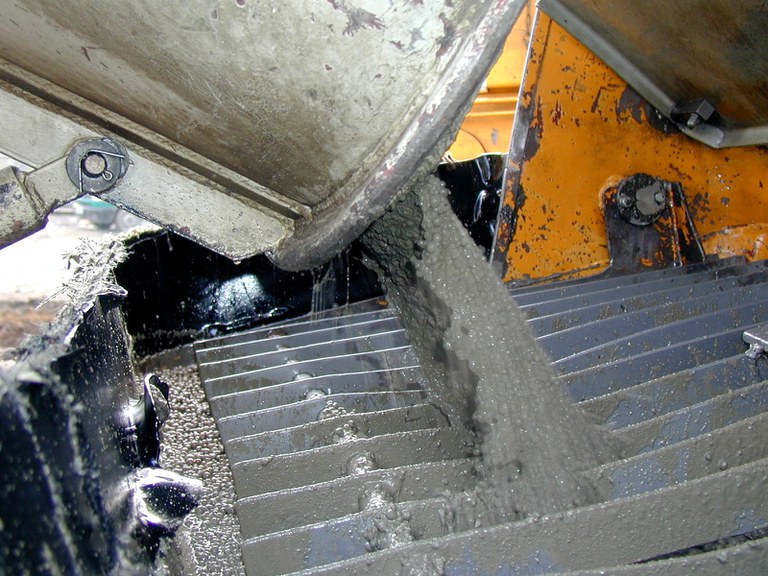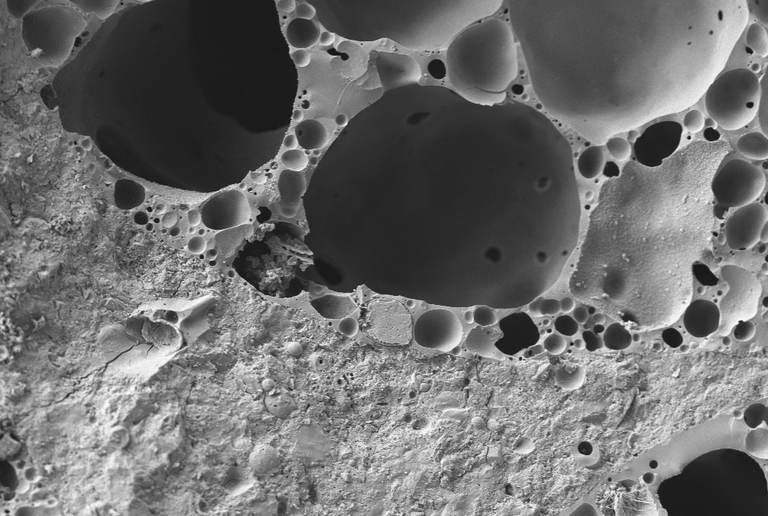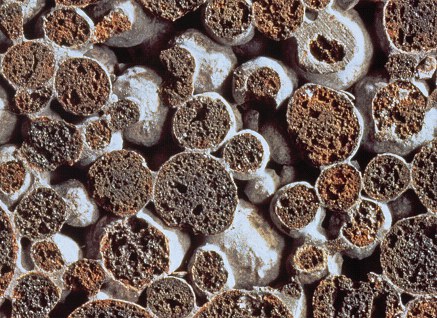Can it be a little less?
The term “lightweight concrete” holds for quite different types of concrete. Among them is structural lightweight concrete (LC) which has dry densities ranging from 800 to 2000 kg/m3. It covers strength classes from LC8/9 to LC80/88. The second type represent no-fines lightweight concretes (LAC). They have densities ranging from 400 to 2000 kg/m3 and strength classes from LAC 2 to LAC 25.
Infralightweight concrete (ILC) represents the transition from structurally dense to lightweight concrete as in-situ concrete. With a dry density clearly below 800 kg/m3, strength classes of LAC 2 to LAC 6 are achieved.
Autoclaved aerated concrete (AAC) represents the third type with dry densities ranging from 250 to 1000 kg/m3 and strength classes from AAC 1.5 to AAC 10. The latter type of lightweight concrete differs fundamentally from the two other with respect to the necessary autoclaving during its production and its microstructure.
The institute has experience and gained profound knowledge for decades in the fundamental research and application in the area of lightweight concrete and contributes to various standardization committees.

Figure: Charging structural lightweight concrete from a truck-mixer into the reservoir of a concrete pump
Structural lightweight concrete
In case of structural lightweight concrete the following research topics are dealt with:
- Evolution, assessment and improvement of extremely light structural lightweight concretes
- Optimizing self-compacting lightweight concrete
- Conversion factors between different lightweight concrete specimen geometries, sizes and storage conditions
- Conversion factors between drilled cores and laboratory lightweight concrete specimens
- Lightweight concrete in fair-faced concrete quality

Figure: Interface zone between an expanded glass particle and the mortar matrix
No-fines lightweight concrete
Special research focus of the institue is on mechanical properties of no-fines lightweight concrete with significantly lower dry densities than the one common today.

Figure: Structure of a no-fines lightweight concrete
Autoclaved aerated concrete
Research at the institute deals with the effect of calcined clays upon the rheological properties during the initial phase of the production of autoclaved aerated concrete, the modifications of the mineral phase composition and the resulting mechanical properties.